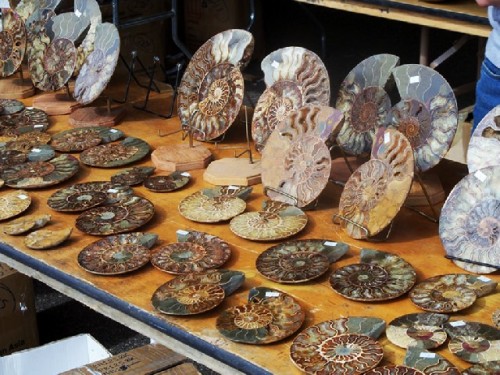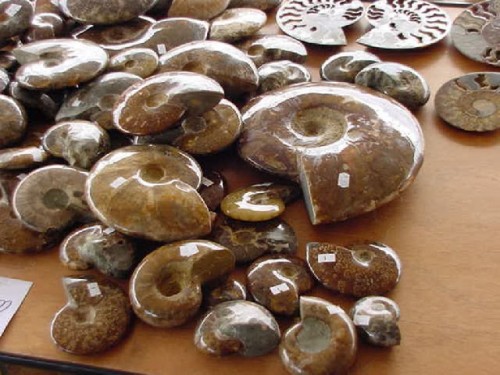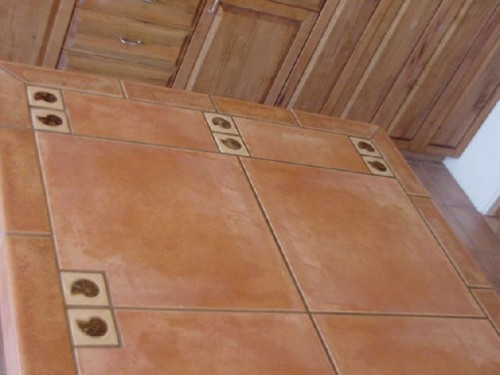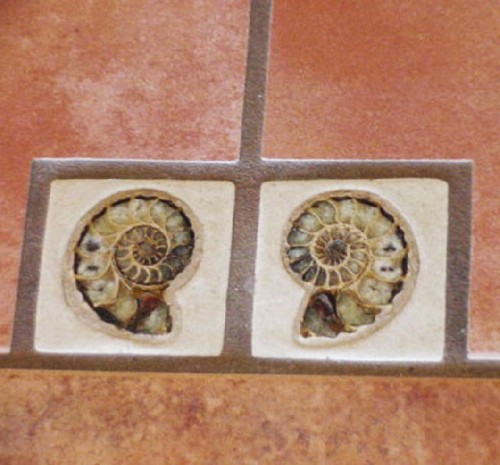Flirting with Fossils
Continuing Coverage of Tuscon Gem Show
By: David Wilson - Feb 05, 2010
Once upon a time there was a creature living in the ocean which looked a lot like the nautilus shells with which you may be familiar. In reality, it is the squid and octopus to which they were most closely related. The last of these critters completed its span of life some 64,000.000 years ago after its kind had proliferated for some 90 to 100 million years.
Their extinction long before humans prevents us from knowing much about their way of life. Knowledgeable guesses based on their remnants lead us to suppose that they probably lived in the open water of ancient sea. Most were good swimmers with flattened, disc shaped, streamlined shells. They preyed on fish, crustaceans and smaller animals and were in turn devoured by marine reptiles. Because their fossilized remains are reminiscent of a ram's horn, they are called ammonites after the Egyptian god, Ammon who was depicted wearing similar horns.
If you are interested in more detail about them: http://en.wikipedia.org/wiki/Ammonite
As sediment gradually encased their bodies and solidified, the result was a remarkable preservation of the bodily form. Over the years, various minerals gradually replaced the original body structure and filled the vacant chambers. The color and texture of these minerals results in a myriad of combinations from chamber to chamber and creates striking fossils. Many specimens are quite beautiful and provide the raw materials for decorative products from jewelry to furniture inlays.
While some are polished and burnished as whole units, more often they are sliced into pairs with the exposed inner surface polished to show its fossilized contents. In size specimens range from diameters of less than 3/8ths of an inch up to a whopping 6 and a half feet, or if current rumor has it right, over 7 feet.
Some very rare finds, composed primarily of aragonite, the same mineral that makes up nacreous pearls are quite iridescent and have been designated as a gemstone by the World Jewelry Confederation. They have been named Ammolites.
So taken were we with the beauty, variety and the staggering age of these Ammonites, we spent considerable time and effort in selecting a number of pairs, which we had set into hand crafted tiles to use as accents on the countertops of our Arizona kitchen. We looked, sorted and anguished over clarity of definition, clearness of color and color combinations. In our search I was surprised to see that even muddy colors and poorly defined details often commanded higher prices than the ones we acquired.
There is not a day while working on one of those countertops, preparing a meal, consuming one, or cleaning up that I do not marvel at the beauty of one or another of those accents.
Throughout the many venues of the Gem Show, and the many Ammonite vendors, the quality and the prices vary a great deal. We have always found both the best quality and the lowest prices, once again, at the Arizona Mineral and Fossil Show. Over the last several years the selection has diminished and the wholesale prices now are primarily by weight rather than by piece. Larger pieces have heftier prices per unit of weight because they are rarer. Those we used for our countertops, 2-4 inches cost us about $3.50 to $4.50 a pair. Over the past 8 years prices have risen by about 15 – 20 percent. It is still a great bargain for their natural beauty. The photos included here are of this years offerings, save for the examples of our tile counters.
For a wide variety of Ammonite graphics Link.





